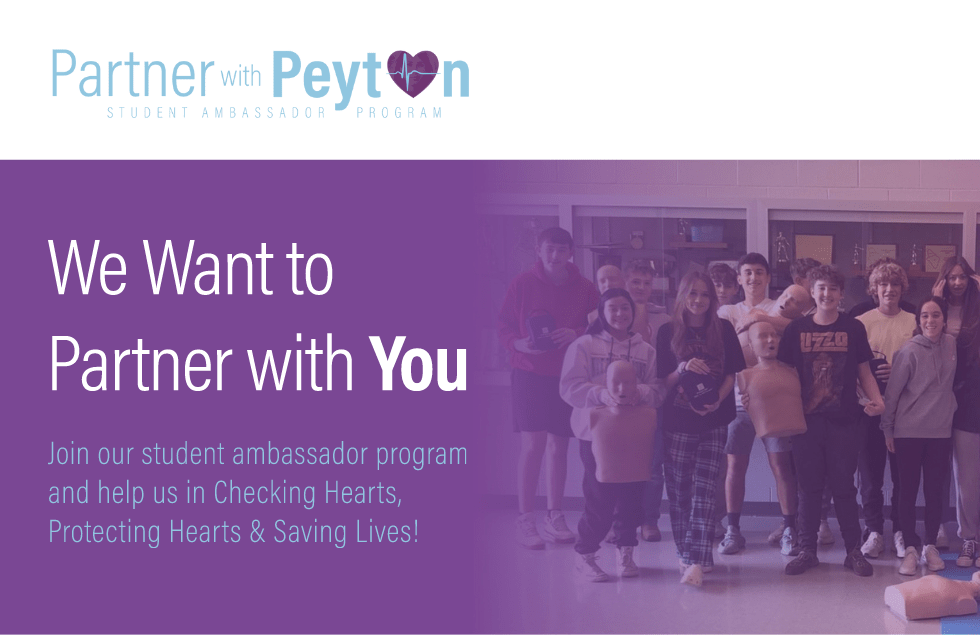Partner with Peyton
Home / What We Provide / Partner with Peyton

Looking for an opportunity to contribute to a great cause and make an impact throughout your school and local community? Join our Partner with Peyton Student Ambassador Program. As a partner, you will join us in spreading awareness for Sudden Cardiac Arrest, while gaining professional development, fulfilling community service hours, enhancing your resume and inspiring others. Click here to learn more about our program. Partner with us and apply today!
What Is Sudden Cardiac Arrest?
Sudden Cardiac Arrest (SCA) is not a heart attack – it’s the sudden onset of an abnormal and potentially fatal heart rhythm that causes the heart to beat ineffectively or not at all. (National Institute of Health). It typically strikes without warning.
Facts about Sudden Cardiac Arrest (SCA):
- SCA is one of the leading causes of death in the US (over 600,000 annually).
- SCA is the #1 killer of student athletes in the U.S.
- SCA is the #2 medical cause of death in youth under 25.
- SCA is the leading cause of death on school campuses.
- Every hour, every day, a student dies from SCA.
- Some warning symptoms that can lead to SCA include:
- Dizziness
- Fainting
- Shortness of breath
- Chest pain
- The first symptom of a hidden heart issue is often sudden death.
- The use of AEDs and CPR increase the chances of surviving an SCA event.
“The underlying cause of SCA can be a heart condition you’re born with (often inherited) and/or can develop as young hearts grow. SCA can also be triggered from a viral illness, or a blow to the chest from an object or a person. Up to 95% of SCA victims die because there was a delay in emergency response.” (Parent Heart Watch)
When someone experiences Sudden Cardiac Arrest, it is critically important to immediately start CPR and get an AED to help restore the heart to a normal rhythm.
Too often, the first sign or symptom of an underlying heart issue is sudden cardiac arrest. Less than 10% of victims survive – most often because of a lack of AEDs or failure of bystanders to initiate CPR.
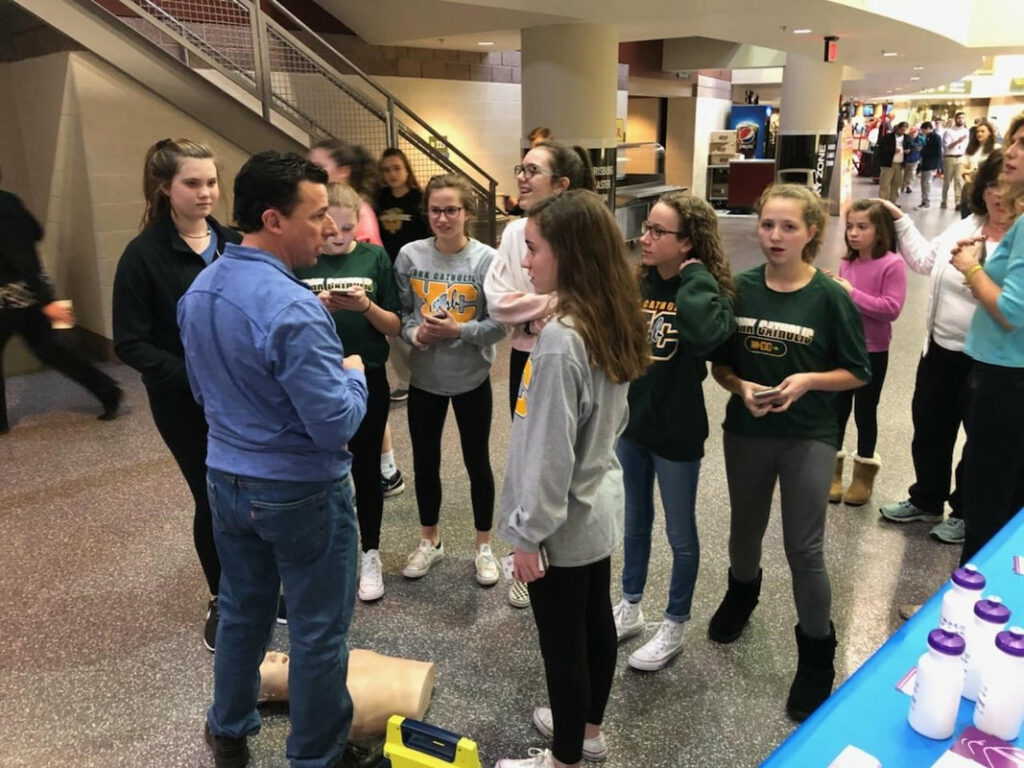
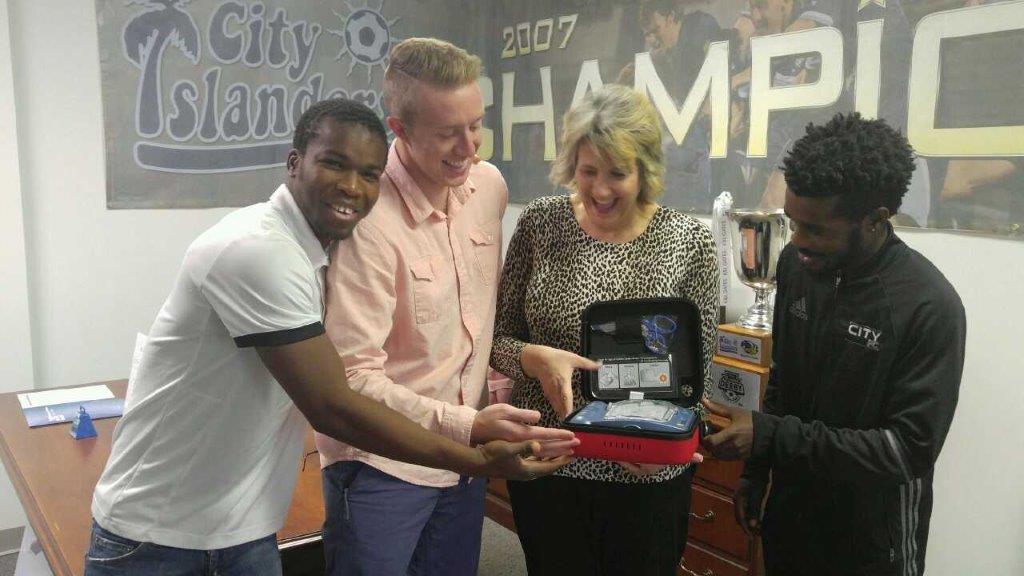
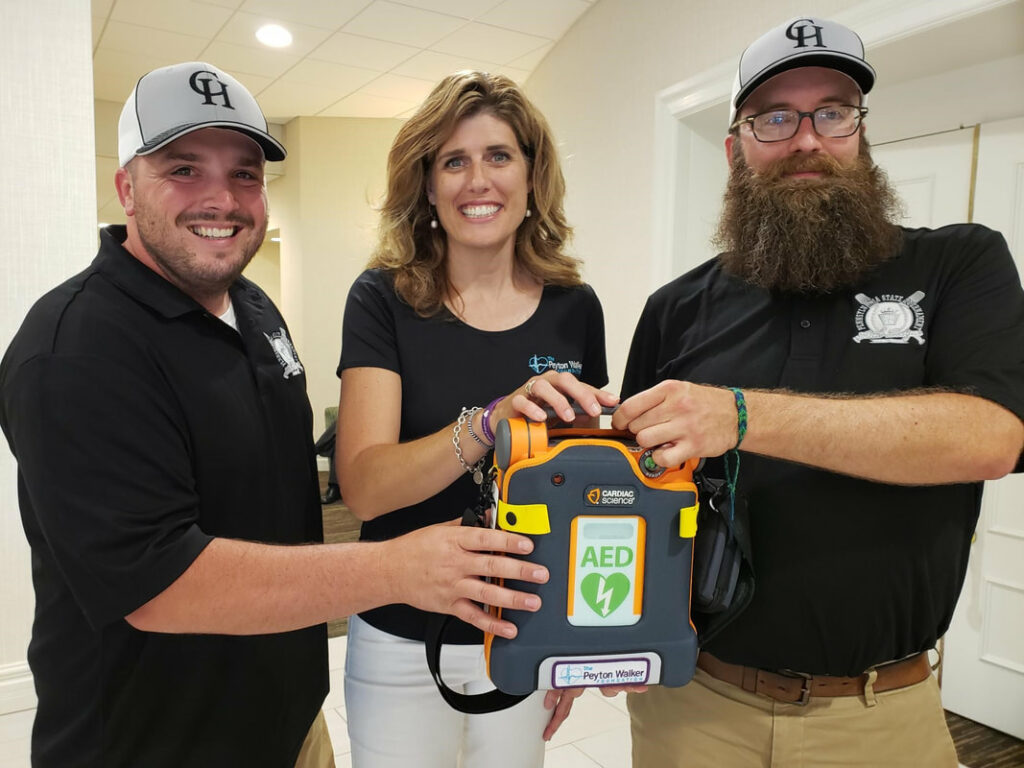
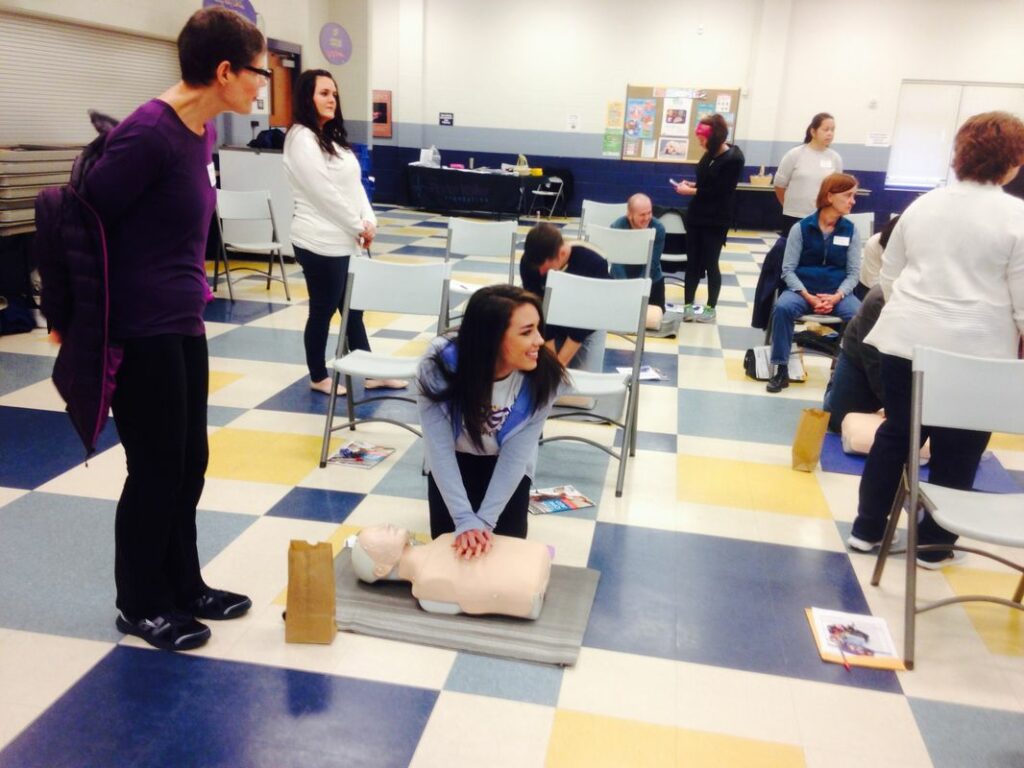
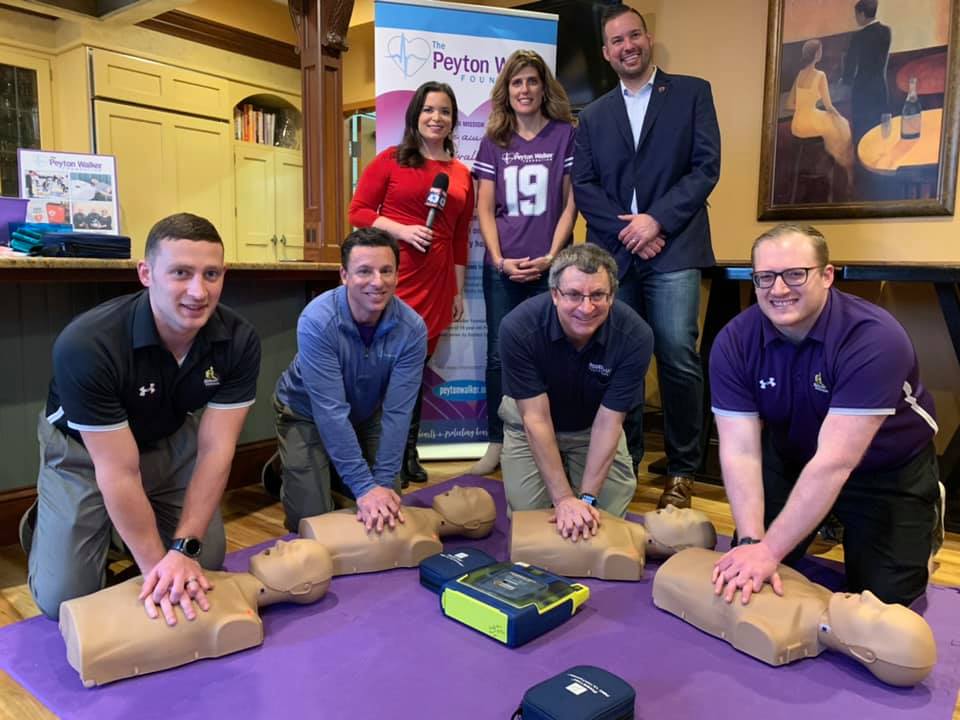

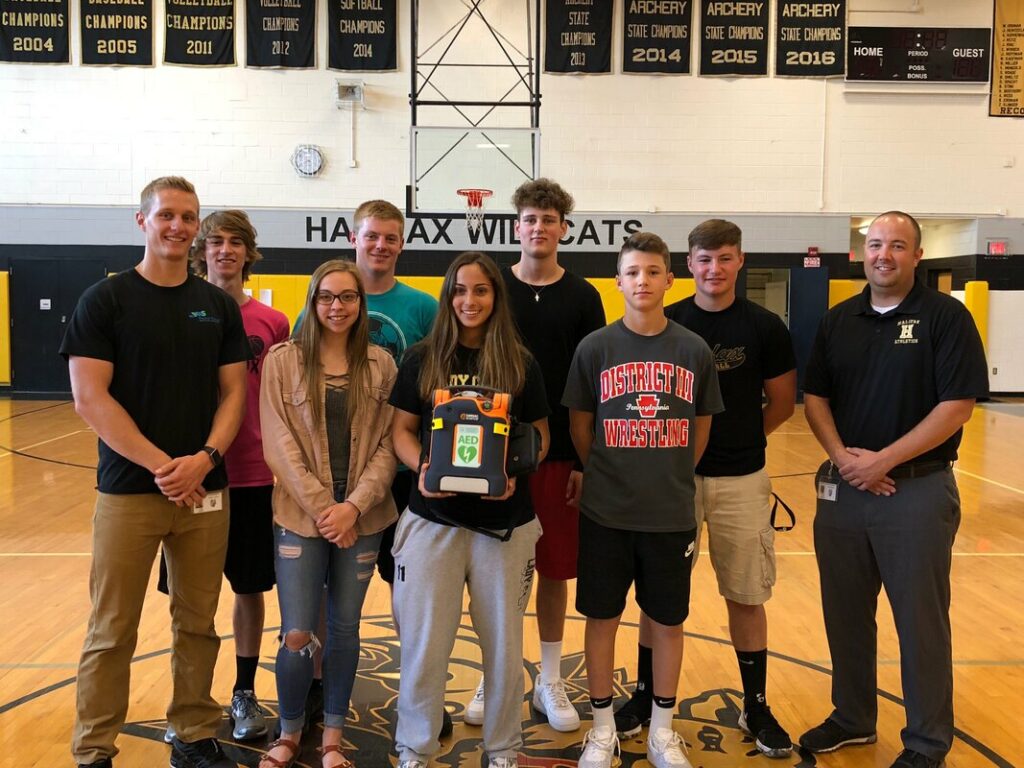
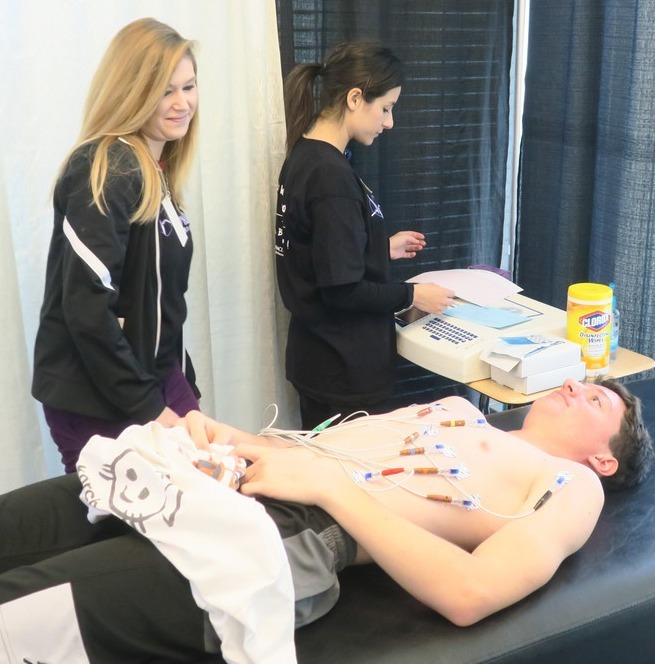
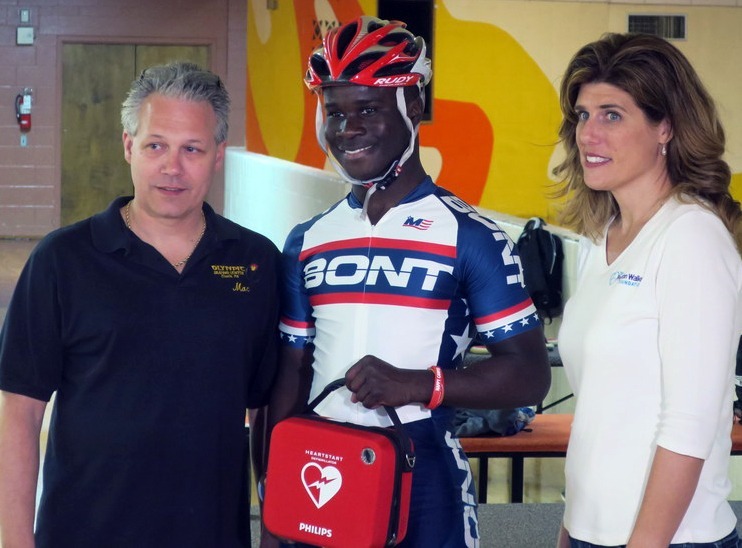
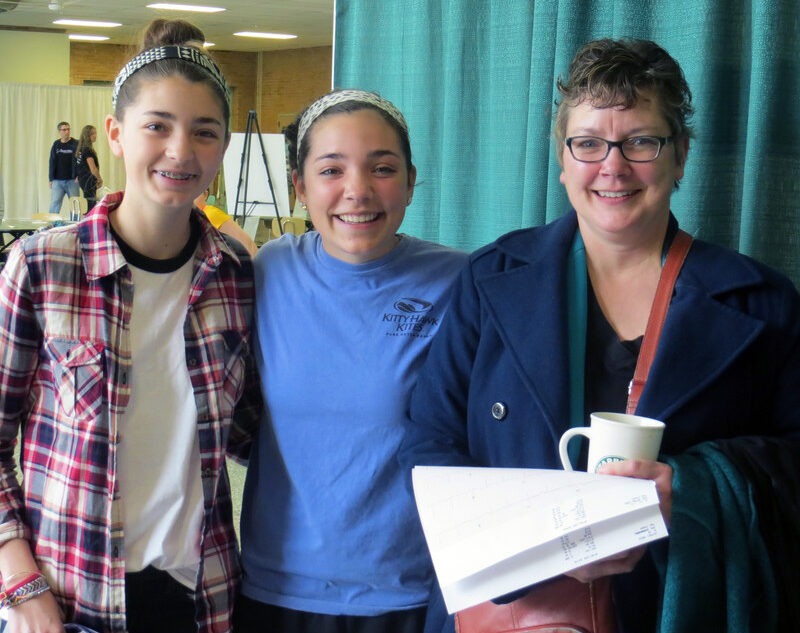
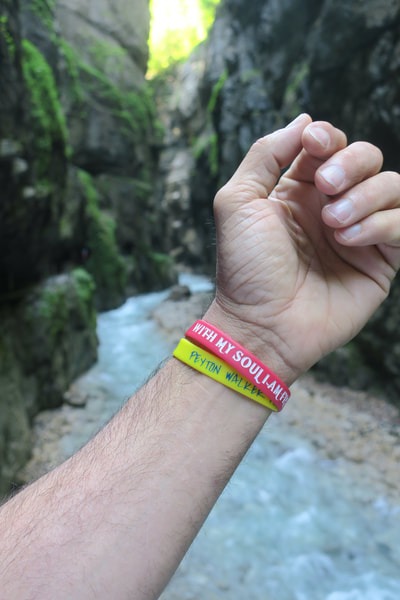
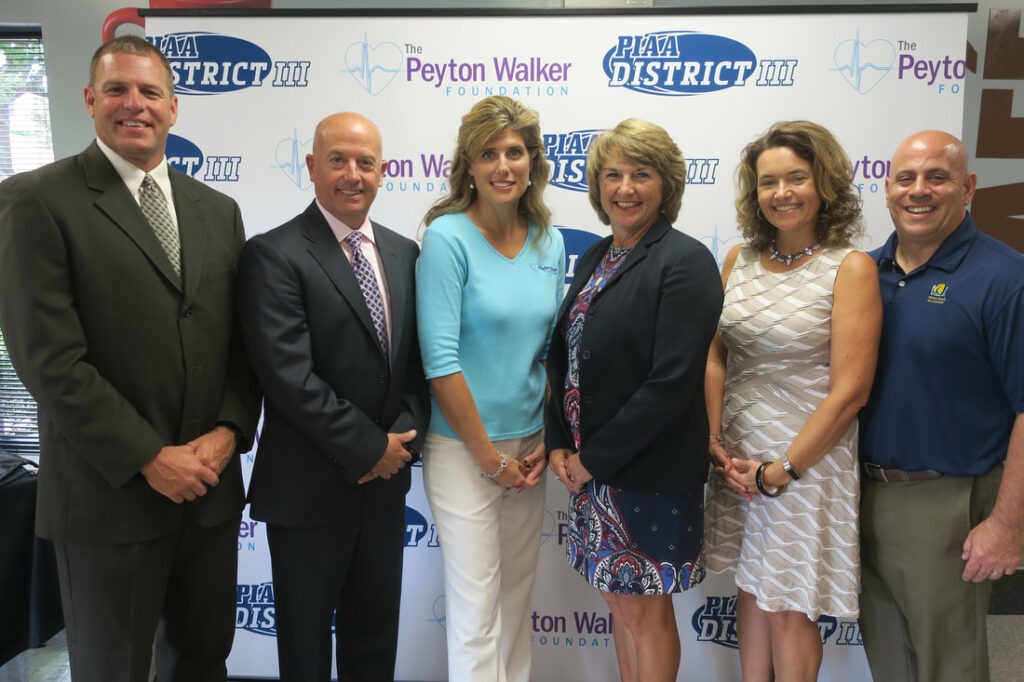
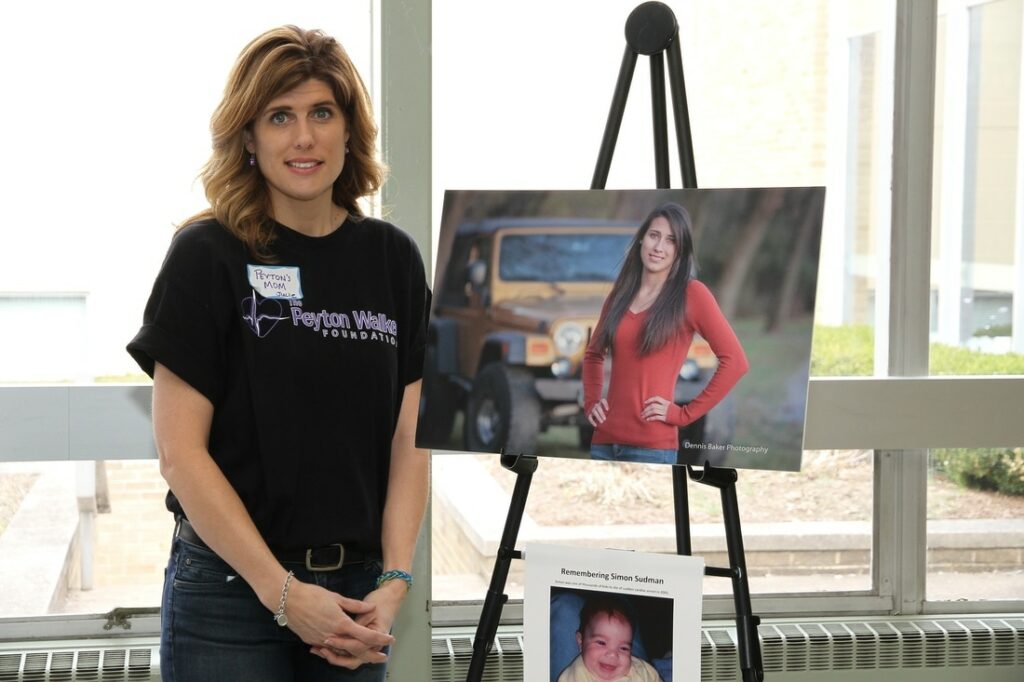
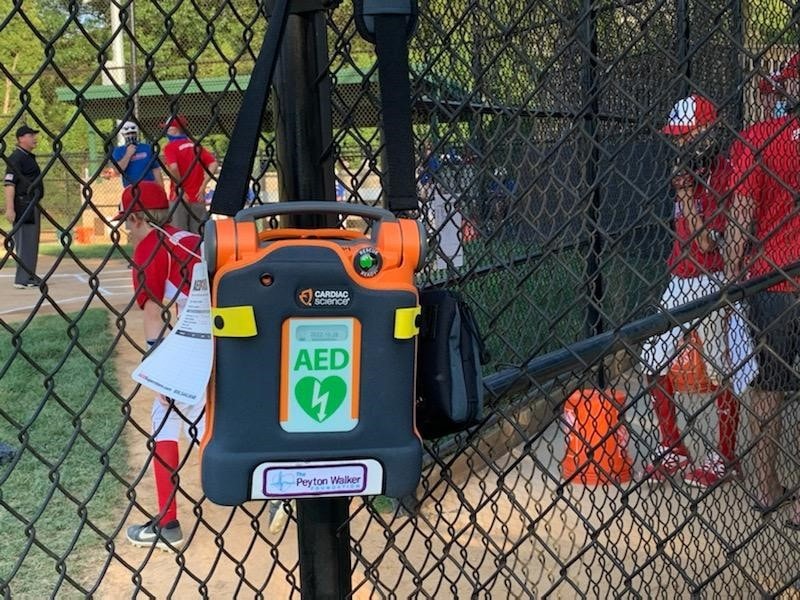
What Does Sudden Cardiac Arrest Look Like?
Learn what Sudden Cardiac Arrest looks like – so that you are prepared to react in the event of an emergency.


